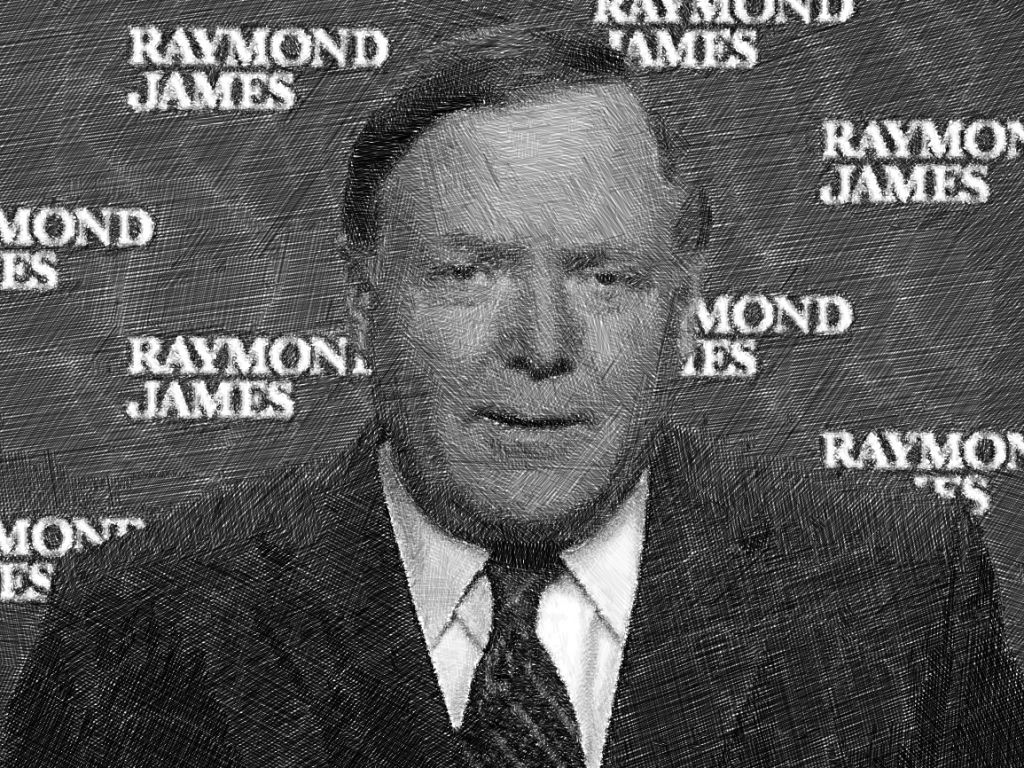Boston
by Jeffrey Saut, Chief Investment Strategist, Raymond James
January 12, 2015
Please come to Boston for the spring time.
I'm stayin' here with some friends
And they've got lots of room.
You can sell your paintings on the sidewalk
By a cafe where I hope to be workin' soon.
Please come to Boston.
She said, "No
Would you come home to me? "... Dave Loggins (1974)
Singer-songwriter Dave Loggins wrote “Please Come to Boston” in May of 1974 and the song was nominated for a Grammy Award in the category Best Male Pop Vocal. And, last week that is exactly what I did, please come to Boston. It was cold and snowy in Bean Town with winds gusting to 35 knots. Nevertheless, I always enjoy that city and last week was no exception. Monday began with a visit to Fidelity where I first met with Sean Gavin, who is the portfolio manager of the Fidelity Advisor Equity Value Fund (FAIVX/$16.04). The fund tends to be a large capitalization value fund, as can be seen by looking at the top holdings. Some of the names in the fund we discussed, and that have favorable ratings from Raymond James’ fundamental analysts, were: Oracle (ORCL/$43.39/Outperform); Chevron (CVX/$108.21/Outperform); and Johnson & Johnson (JNJ/$104.94/Outperform). Historically the fund has a high upside capture ratio and low downside capture, which is intuitive when you look at its holdings. Our discussion touched on many subjects, but the comment from Sean that stuck in my head was, “The Fed may just stay looser for longer than most expect.” That was really interesting to me since I have written the Fed could be the wildcard this year. Indeed, if the Fed raises interest rates too fast it could cause a P/E multiple contraction with a concurrent “hits” to equities. However, if the Fed stays looser for longer, 2015 could turn out to be a better year for stocks than 2014.
I also met with Naveed Rahman, a portfolio manager that is keenly focused on dividend-paying equities. Hereto, his comments rang true with me since I believe dividends are hugely impactful on the total return in portfolios. Historically the S&P 500 (SPX/2044.81) has returned roughly 10.4% per year since the 1920s. Five percent of that return comes from earnings growth and 0.9% comes from P/E multiple expansion. But a large 4.5% comes from the compounding of dividends. Moreover, dividends give investors a downside cushion in the event of a stock market correction. Naveed also consults with James Morrow, who is the portfolio manager of the Fidelity Equity Income Fund (FEQIX/$58.67) that in an era gone by used to be captained by Bruce Johnston, one of the most successful investors of our time.
Over lunch I met with Dirk Hotschire, who is the head of Fidelity’s asset allocation team. He talked about more divergences between policy and economic conditions. He noted that Europe is at a mid-cycle slowdown and the rest of the world’s slowdown is going to cap the U.S. growth rate and keep interest rates low. Dirk also believes, as do I, the U.S. dollar is going to remain strong and that emerging markets tied to the Chinese growth story will continue to struggle. Longer term, he thinks the U.S. is in an economic uptrend, but there will be more divergences and volatility. Hereto, one particular comment stuck with me. To wit, Dirk said, “Because the 2008 – 2009 financial fiasco was so devastating, it will keep the U.S. in a mid-cycle position for a lot longer than normal before we transition to a late-cycle position.” For investors this is very good news because it extends the investment cycle whereby mid-cycle investments in the technology and the industrial sectors should continue to be overweighed. Dirk also mentioned that after the first interest rate hike it has typically taken two years, on average, before the U.S. transitions to late-cycle, which is where economic growth moderates, credit tightens, earnings come under pressure, economic policy contracts, inventories grow, and sales contract. Later that day I did a video with my friend Claus te Wildt, who is the “voice” of Fidelity, as we discussed themes for 2015. That evening was dinner with Claus at a new restaurant in the seaport district of Boston called Bastille Kitchen that was excellent.
After sloshing through the snow and wind, I then arrived at Columbia Management to meet with David King, portfolio manager of the Columbia Convertible Securities Fund (PACIX/$18.77). I have talked with David before and always found the exchange illuminating. In our meeting the point that stood out was that there is a once in a lifetime opportunity to buy the “broken debt” in the energy complex. To be sure, some of the companies that have seen their bonds decline to fifty cents on the dollar, with yields that are current and approaching 14%, have very decent risk/reward ratios. Investors can either contact their financial advisor for ideas along this line, or they can just buy David’s fund.
My next stop was Putnam for a meeting with Bill Kohli and Jerry Sullivan. Bill manages the Putnam Diversified Income Trust (PDINX/$7.54), which I own, and Jerry manages the Putnam Investors Fund (PINVX/$21.76) and the Putnam Multi-Cap Core Fund (PMYAX/$17.49), which I also own. Bill noted that German yields were negative for bonds maturing in less than six years, implying there are not many German bonds for Mario Draghi to buy. He also thinks the directional “call” on crude oil is difficult in that it’s not how low oil prices will trade, but that how long prices will stay low. He further opined most oil companies have 18 months of cash flow coverage to pay their debt and that Venezuela has 18 months of cash to cover its short-term debt obligations. In the foreign debt markets he likes Venezuela, Argentina, and believe it or not, Russia.
The call for this week: I had numerous other meetings in Boston, but time constraints will not permit me to elaborate. As for the stock market, in last Friday’s Morning Tack I wrote:
Granted yesterday’s rally was impressive, but I am going to stick with my indicators that still suggest a rough patch for the first few months of the New Year. If those indicators are wrong, I will adjust my views. But until then, I am dancing with the “date that brought me here.” And, I will leave you with this from one of the BEST strategists on Wall Street who wrote, “[The] weight of the evidence suggests the bull market has embarked on a broad topping process that could take its time.” While I continue to think the secular bull market is alive and well, the near-term directionality is questionable.
This morning, however, the preopening S&P futures are better by 12 points on M&A activity, rumors quantitative easing will be introduced next week in Europe, and Saudi Prince Alwaieed’s statement that, “You will not see $100 a barrel oil again,” leaving crude oil down to $47 per barrel. So we knifed trough the 2030 – 2040 level I thought would contain the rally and then extended into the 2060 – 2080 overhead resistance for the SPX. Subsequently, last Friday we pulled back into the 2030 – 2040 zone, which has now become support. This morning it looks like we are going to try the upside once again, but unfortunately I do not think we are out of the woods quite yet.
Copyright © Raymond James















